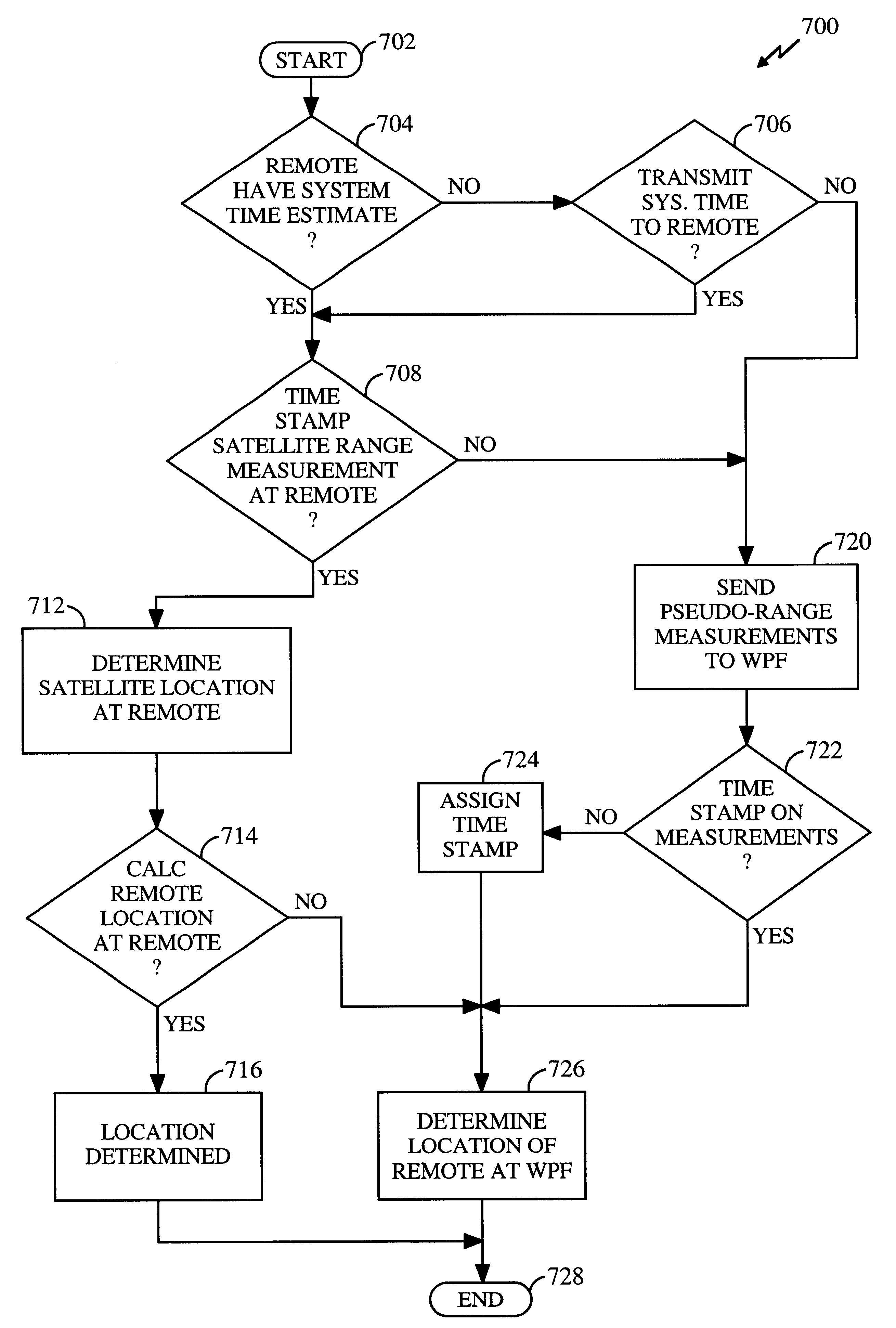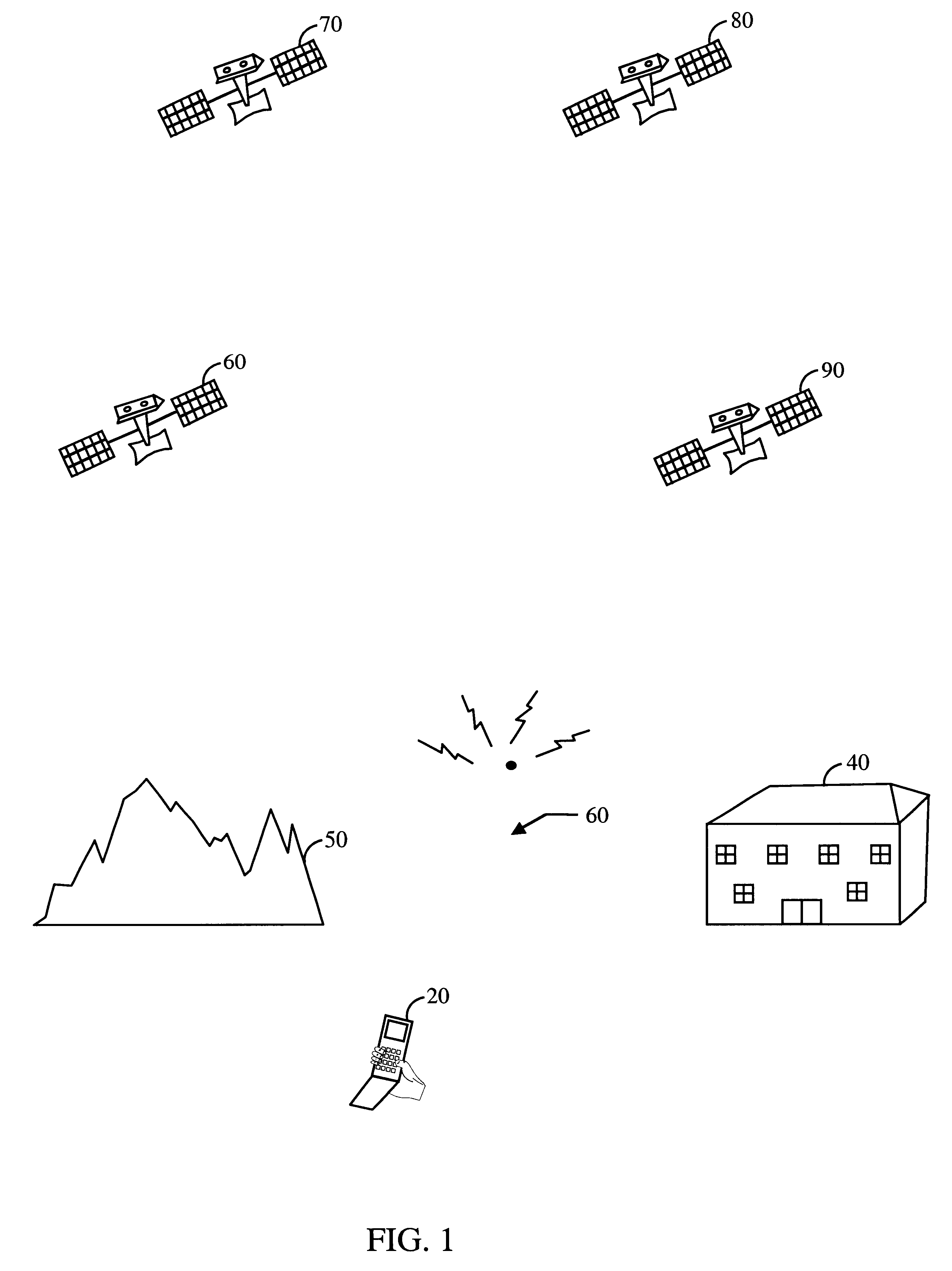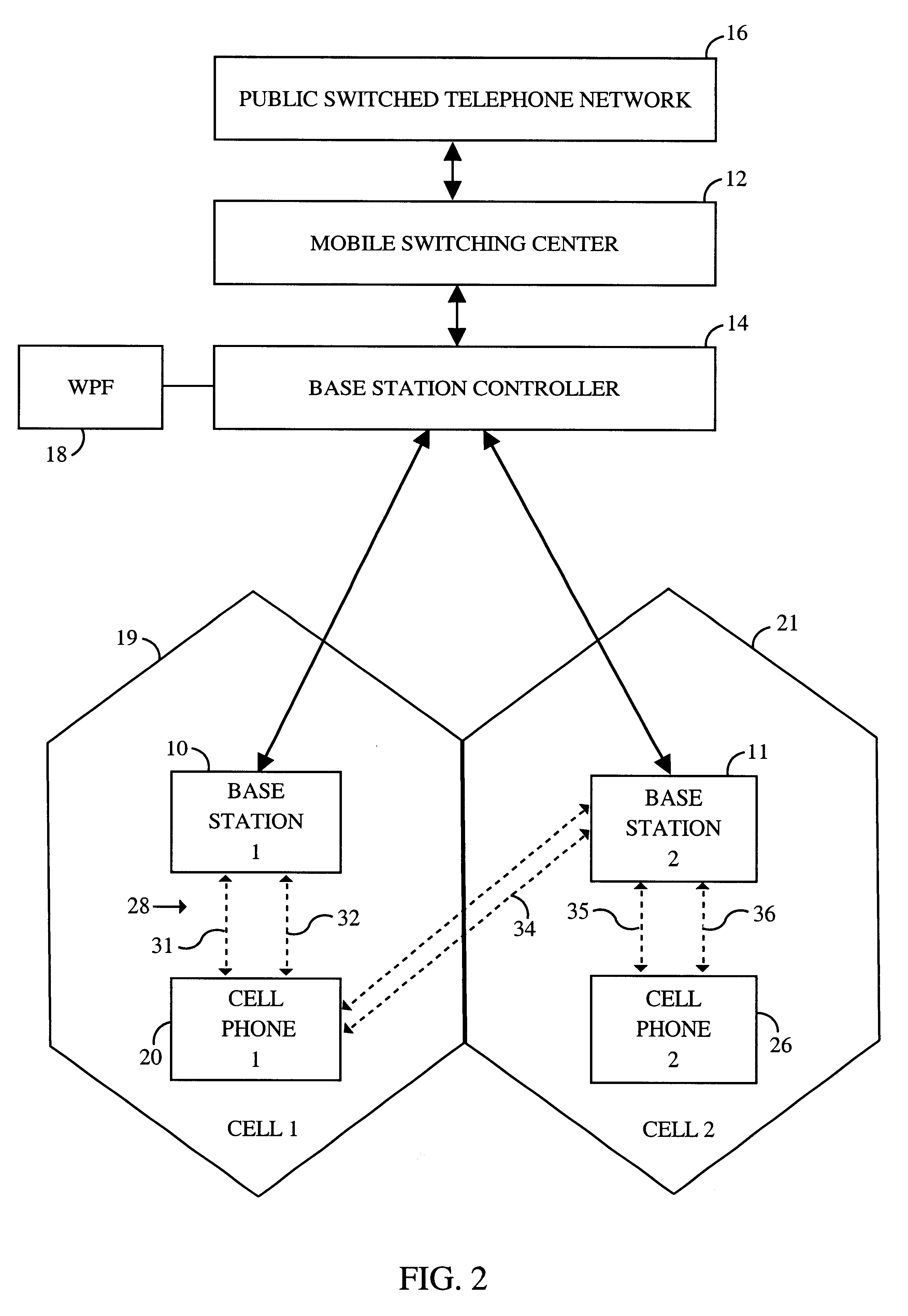Method and apparatus for locating GPS equipped wireless devices operating in analog mode
a wireless device and analog mode technology, applied in the field of communication networks, can solve the problems of affecting the operation of the control channel, and not being able to transmit measured ranges to the base station
Inactive Publication Date: 2002-08-06
QUALCOMM INC
View PDF7 Cites 80 Cited by
- Summary
- Abstract
- Description
- Claims
- Application Information
AI Technical Summary
Benefits of technology
In one embodiment, the present invention provides a method to solve this problem by time stamping the approximate time a satellite range measurement is made. This timestamp is assigned at either the remote station or elsewhere in the network. The difference between true GPS network time and this measurement time is treated as a variable "error" in measurement, the length of which is unknown. However, the method of the present invention allows this variable to be determined and used to find the physical location of the remote station.
The invention provides its users with numerous advantages. One advantage is that it speeds up the process of locating a remote station. Another advantage is that the location of the remote station may be determined even if the remote station does not have an estimate of network time. The invention also provides a number of other advantages and benefits that should become even more apparent after reviewing the following detailed descriptions of the invention.
Problems solved by technology
However, the method is not suitable for phones in the idle state, because the phone lacks a dedicated traffic channel over which to send the information to the base station during the idle state.
Hence, it is not practical to transmit measured ranges to the base station.
However, even transmitting this information to the phone creates a significant burden on the control channel.
The control channel has a very limited capacity to carry messages.
Hence, it is not possible to convey extensive GPS information over the control channel.
Furthermore, the information must be transmitted in a form that allows the information to be used for a relatively long time after it has been received.
Of course, the time stamp assigned to the measurements may have a significant error: a few seconds or more.
This error will result in an error in the computed location of the remote station.
For example, when a source base station is within a CDMA system using a first frequency band and target base station is in a second CDMA system using a second frequency band, the remote station will not be able to maintain links to both base stations concurrently, since most remote stations do not have the ability to tune to two different frequency bands concurrently.
Therefore, the receiver cannot know the exact point in "true" GPS time at which the satellite signals are received.
Even then, the time transfer process may not result in sufficient accuracy.
Consequently, the remote station either cannot time stamp the measurements, or can only provide a very rough time stamp.
This will cause an error in the computed location of the remote station.
The time stamp assigned to the measurements by any of the above methods may have a significant error: a few seconds or more.
This error will result in an error in the computed location of the remote station.
Method used
the structure of the environmentally friendly knitted fabric provided by the present invention; figure 2 Flow chart of the yarn wrapping machine for environmentally friendly knitted fabrics and storage devices; image 3 Is the parameter map of the yarn covering machine
View moreImage
Smart Image Click on the blue labels to locate them in the text.
Smart ImageViewing Examples
Examples
Experimental program
Comparison scheme
Effect test
Embodiment Construction
While there have been shown what are presently considered to be preferred embodiments of the invention, it will be apparent to those skilled in the art that various changes and modifications can be made without departing from the scope of the invention as defined by the appended claims.
the structure of the environmentally friendly knitted fabric provided by the present invention; figure 2 Flow chart of the yarn wrapping machine for environmentally friendly knitted fabrics and storage devices; image 3 Is the parameter map of the yarn covering machine
Login to View More PUM
 Login to View More
Login to View More Abstract
An apparatus and method for locating a remote station operating in analog mode, and that may not have a sense of network time, using an inverted GPS approach. The invention also enables remote stations operating in analog mode that do not know true GPS time to determine their own location. A time stamp, reflecting the approximate time a satellite range measurement is made, is assigned to the measurement at either the remote station or elsewhere in the network. The difference between true GPS network time and the measurement time is treated as a variable "error" in measurement, the length of which is unknown. This variable error is determined and used in determining the physical location of the remote station.
Description
1. Field of the InventionGenerally, the present invention relates to communication networks. More specifically, the invention relates to an apparatus and method for determining the physical location of a mobile telephone within a cellular communication network.2. Description of the Related ArtRecent developments in global positioning satellite networks (GPS) and terrestrial mobile communications make it desirable to integrate GPS functionality into a mobile communication device, such as a mobile telephone, more generally referred to herein as a remote station, in order to support various position location functions and features. A wireless link exists between a mobile communication device within a terrestrial mobile communications system and a base station within the communications system. A base station is typically a stationary communication device that receives wireless communications from, and transmits wireless communications to, a wireless mobile communication device. The base...
Claims
the structure of the environmentally friendly knitted fabric provided by the present invention; figure 2 Flow chart of the yarn wrapping machine for environmentally friendly knitted fabrics and storage devices; image 3 Is the parameter map of the yarn covering machine
Login to View More Application Information
Patent Timeline
 Login to View More
Login to View More Patent Type & Authority Patents(United States)
IPC IPC(8): G01S5/00G01S5/14G01S1/00G01S19/25
CPCG01S19/09G01S19/42
Inventor AGASHE, PARAG A.SOLIMAN, SAMIR S.VAYANOS, ALKINOOS HECTOR
Owner QUALCOMM INC
Features
- R&D
- Intellectual Property
- Life Sciences
- Materials
- Tech Scout
Why Patsnap Eureka
- Unparalleled Data Quality
- Higher Quality Content
- 60% Fewer Hallucinations
Social media
Patsnap Eureka Blog
Learn More Browse by: Latest US Patents, China's latest patents, Technical Efficacy Thesaurus, Application Domain, Technology Topic, Popular Technical Reports.
© 2025 PatSnap. All rights reserved.Legal|Privacy policy|Modern Slavery Act Transparency Statement|Sitemap|About US| Contact US: help@patsnap.com



